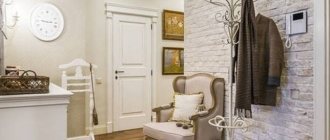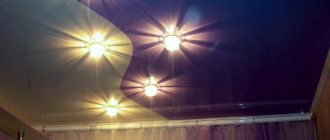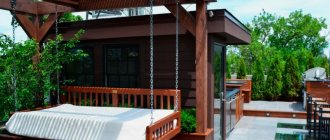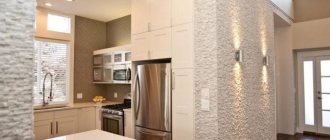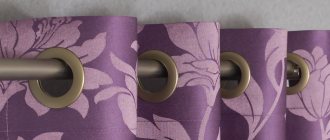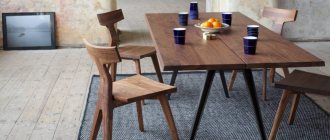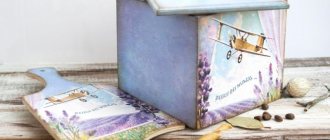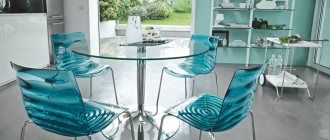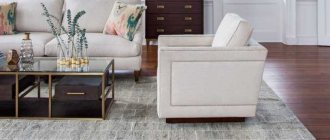Yacht varnish is a waterproof product for coating wooden surfaces, which is used when processing wooden elements and hulls of pleasure boats, sailing boats, etc. Yacht varnish is also in demand for interior woodwork. It is used primarily for painting wall panels, parquet floors made of natural wood, furniture and frames of country cottages. The main qualities of such a coating are durability and resistance to high humidity. To achieve this, volatile substances that are unsafe for health are included in paintwork materials: xylene and toluene.
Carefully study the composition of the product before purchasing: use only paints and varnishes without harmful components for interior decoration. It is recommended to use such compositions in open spaces, and when using indoors, use protective masks and ensure high-quality ventilation.
General characteristics of varnishes for yachts
Yacht wood varnish has the following properties and characteristics:
- high coating strength;
- increased water resistance;
- high adhesion (good adhesion to wood, preventing cracking and peeling);
- immunity to water and high humidity;
- simplicity and cost-effectiveness of application due to good coverage properties (despite the thick texture, the paint spreads well).
Depending on the properties of the coating, yacht varnish for wood is divided into 2 types: glossy and semi-matte. Glossy compositions reflect 70 - 100% of light, semi-matte - 30 - 70%. Matteness is the result of the presence of a passive filler, the particles of which scatter light (before use, the semi-matte yacht varnish is thoroughly mixed, turning the closed jar upside down 10 - 15 times in a row to prevent particles from settling to the bottom). Semi-matte varnish for yachts is optimal for masking defects in wooden surfaces. The use of a glossy coating requires careful preparation (grinding, scraping).
Application instructions
Work indoors or outdoors can only be done at positive temperatures, with the optimal range being +15…+30 degrees. Humidity during application should not exceed 80%.
How to determine solution consumption
Usually the exact consumption of the substance is indicated by the manufacturer on the packaging. The standard flow rate is 60-130 ml/sq.m. m. This figure may vary depending on the following factors:
- quality of grinding - the higher it is, the less composition is consumed;
- type of material - porous species (walnut, ash) require more product;
- viscosity - less liquid varnish is needed than thick varnish;
- tools for application - a spray gun will use less varnish than hand tools.
Selecting Tools
To apply the special product, tools are required, and only compositions in cans are applied by conventional spraying.
Brush
This is a simple and affordable tool for painting work. It can have synthetic or natural bristles of different lengths. If the bristles are natural, you will have to wring out the brush often when working, because it tends to accumulate liquid. Artificial materials provide a smoother and more even finish, are resistant to wear and are better suited for outdoor use.
Roller
Rollers are ideal for large areas. You need to purchase tools with short pile that do not cause drips or become deformed. To make the film more uniform and dense, it is worth buying small rollers. Large products are used to process facades.
Spray gun
This handy device is great for varnishing surfaces, especially in hard-to-reach places. The composition is applied by spraying, resulting in a beautiful, uniform, high-quality coating.
Wood preparation
Varnishing should begin by preparing the wood. If its humidity is above 20%, the material must be dried with a construction hairdryer or in special chambers. Next, clean the product from dirt, dust, any stains and grease. Sand the base using sandpaper or a grinding machine. Remove areas of mold and mildew and treat them with an antiseptic.
Primer
To reduce the porosity of wood, it is primed with a special pore-filling primer. Among other things, it will improve the adhesion of the special composition to the substrate and reduce its consumption. After priming, a small area of the product is varnished: if the wood continues to absorb the varnish strongly, apply another layer of primer.
Varnish coating
After opening the can, mix the composition with a wooden spatula, which will prevent delamination. If the mass is too thick, add a solvent - solvent, white spirit, turpentine. Each layer should dry for 2-6 hours (the exact time is indicated in the instructions), after which it is sanded and a new layer is applied. Then the film is allowed to dry completely.
Using varnish: secrets of proper application
Among the clients of , a leading supplier of finishing and paintwork materials in Russia, polyurethane varnish for yachts, which is odorless and suitable for interior work, is in high demand. One-component yacht varnish for interior woodwork is used for processing furniture facades, and two-component varnish is used for application to finishing elements and internal parts of wooden structures (rafters, ceiling beams, vertical posts), which is due to high dry residues and maximum durability of the coating.
Yacht varnish should be applied under a number of conditions. Thus, the moisture content of the wood being processed cannot exceed 20% (it is pre-dried). Painting should not be carried out at an ambient temperature of less than +10 0C, otherwise the coating will lie incorrectly, warp, and its service life will be significantly reduced. It is also not recommended to use yacht varnish when treating surfaces that contain dust and dirt.
Apply yacht varnish in 2 - 3 layers (recommendations for application are indicated on the packaging - carefully read the instructions). This is enough to reliably protect wood from chemical influences, mechanical deformations, chips, impacts, and humidity.
How to choose
When deciding which yacht varnish is best for the work being carried out, you should pay attention to the nature of the work (what type of varnish is suitable for what is described above). It is also worth focusing on leading manufacturers who have proven themselves positively.
The main manufacturers of yacht varnish are Beckers (Sweden), Tikkurila (Finland), Marshall (Turkey). You can read reviews on the Internet about varnishes that have already been used for a similar type of work.
Methods of applying varnish for yachts
Yacht wood varnish can be applied to surfaces previously coated with alkyd or polyurethane compounds, sanding the areas of chips and damage to the old layer. After thoroughly mixing the composition, if necessary, dilute it with White Spirit and apply it to the prepared surface. Brushes, rollers and a spray gun are used for painting.
Regardless of the composition, yacht varnish is used for wood as follows:
- clean the wood surface from dirt;
- sand or sand the wood to eliminate unevenness;
- apply paintwork, making smooth movements back and forth;
- re-coat the wood with paint after the previous layer has dried.
The use of a spray gun is optimal when covering large surfaces outdoors. For this application, use compositions diluted with a “slow” solvent (up to 10% of the total amount), the particles of which do not have time to harden in the air, and a gun with a nozzle size of at least 1.7 mm (it is kept at a short distance from the wood). Otherwise, it is difficult to achieve uniformity and shine of the coating. When working with a brush or roller, do not make sudden movements, otherwise bubbles will form, reducing the aesthetics of the processed products.
| Yacht wood varnish |
| 8 (495) 995 40 39 |
Packing methods
Most often, varnishes are sold in cans, for application of which you need to buy brushes or rollers. They can have a large volume, which is convenient for varnishing large surfaces. Manufacturers also make products in aerosol form, packaged in cans. They are easy to use and practical, although their price is much higher.
Yacht varnish for interior woodwork: features and characteristics
You can use yacht varnish for wood when carrying out interior work if it is made on an alkyd-urethane or polyurethane base. It is suitable for application to a wide range of products: parquet, wall panels, furniture, decorative interior elements. But there is a limitation on its use when carrying out repair work and processing furniture in children's rooms - special, environmentally friendly paints and varnishes have been developed for such cases.
Yacht varnish for interior woodwork is virtually odorless and dries quickly due to the inclusion of urethane components. Polyurethane-based products should be used to cover floors and stairs, as they are the most resistant to abrasion. Also, yacht varnish for interior woodwork is sufficiently resistant to moisture, so it is used for finishing rooms with a humidity level above 60%. Polyurethane gives the film hardness and elasticity - the resulting coating is maximally resistant to scratches, cracking and delamination when the substrate is deformed.
Yacht varnish for interior woodwork is produced by various manufacturers. The best of them, taking into account their areas of application, are listed in this table:
| Scope of application | Brand |
| Ship varnish HESSE Lignal | Finishing of wooden surfaces subject to high operational loads and high humidity (wooden floors, walls and ceilings in kitchens and bathrooms) |
| Hesse two-component yacht varnish | Finishing of surfaces that are not exposed to aggressive environmental influences and precipitation (wall panels, railings, interior doors) |
| One-component varnish Dufa Retail Yacht | Finishing of furniture facades and decorative wooden elements that do not experience serious operational loads |
Properties and chemical composition
The main purpose of varnish is to protect wood from the negative effects of external factors. Therefore, special substances are introduced into its composition to ensure such properties at a sufficient level. To obtain high water resistance, the product contains xylene, toluene or other toxic benzene compounds. It is because of them that the varnish cannot be used indoors, although as it evaporates, the coating becomes safe for the body. The main component of yacht varnish can be various polymers - alkyds (synthetic resins based on phthalic acid), urethanes, etc.
The concept of “yacht varnish” or “deck varnish” is applicable to all products that are characterized by increased weather resistance and are intended for wooden products. Materials of this group are characterized by the following properties:
- High adhesion to the base. The varnish film adheres reliably to the surface, does not peel off or crack over time.
- Strength and hardness. Thanks to these qualities, the varnish does not react to scratches, is not damaged by other types of mechanical stress and has a long service life.
- Elasticity. After drying, the material is able to move to some extent following changes in the position of the substrate. This property helps the varnish film not to crack or peel even with severe shrinkage of the wood.
- Abrasion resistance. Yacht varnish is resistant to abrasion because it has good ductility and tensile strength.
- Moisture resistance. The film repels water, protects wood from getting wet and swelling, and prevents putrefaction and mold.
- Counteracting microorganisms. Thanks to the varnish coating, the underwater part of the ships does not become overgrown with algae, fungal colonies, and other aquatic organisms do not settle on it. This helps save fuel and extend the life of the wood. This property is achieved by introducing into the composition biocides that are not washed out by water and do not dissolve in it.
- UV resistance. The varnish includes additives that absorb ultraviolet radiation and transform it into thermal energy. The composition also contains light stabilizers (amines) that bind free radicals and prevent the latter from destroying the varnish film.
Insecticides are often introduced into household products that are used to protect furniture and other household items. They prevent the appearance of flies, other insects and the proliferation of larvae in the wood.
Yacht varnish for exterior use
Yacht varnish for exterior woodwork is used when processing facade elements, cornices, window frames and other wooden structures used in the open air. Yacht varnish is resistant to the negative effects of salt and fresh water, precipitation and UV rays. Yacht varnish for exterior woodwork is suitable for painting gazebos, benches, wooden fences and structures in direct contact with water (wooden elements of decorative garden bridges and piers).
Yacht varnish for exterior woodwork is produced on the basis of alkyd-urethane resins. The composition often includes antiseptic substances that protect wood from rotting, mold and mildew. For outdoor varnishing, choose a weather-resistant coating that has the hardness of parquet varnish and creates a dirt- and water-repellent film on the surface of the wood. Exterior yacht varnish provides a hard, flexible finish that can be cleaned with household detergents.
| Buy |
Recommendations for selection
Before purchasing varnish, you need to decide in advance about its purpose. If the work is carried out in air, you can choose an alkyd or alkyd-urethane composition. For interior work, it is recommended to buy urethane-alkyd varnish. The type of surface being treated also affects the choice of composition. Thus, polyurethane-acrylic products are suitable for home furniture made of natural wood, alkyd and their derivatives are suitable for garden benches, gazebos, and swings.
It is better to treat a wood floor with high-quality urethane-alkyd marine varnish, while carefully ventilating the room. Glossy coatings look more festive and attractive, matte ones look stylish and elegant. If you need a varnish with maximum moisture resistance, you should pay attention to the brands Belinka, Alpina, Eskaro.
Precautions when using yacht varnishes
When using yacht varnish at home, you must take precautions: protect your respiratory organs and mucous membranes with a respirator, mask and plastic goggles, and also wear rubber gloves to avoid contact with the skin. It should be applied indoors, ensuring good ventilation. The room must be ventilated within 1 day after surface treatment.
If yacht varnish gets into your eyes, you should immediately rinse them with plenty of warm boiled water, and then consult an ophthalmologist. In case of contact with skin, remove the composition with a cotton swab and rinse the contaminated area with plenty of water.
It is necessary to store paints and varnishes in tightly closed packaging, away from open flames and heat sources. Avoid exposing the composition to direct sunlight and high humidity. Waste after painting is prohibited from being washed down the drain due to its high toxicity.
Variety in composition
Paint and varnish products offered by hardware stores vary in characteristics. Their classification is based on which chemical is the main one in the composition. Based on this feature, four groups of brands are distinguished.
Alkyd
Alkyd varnishes with the following set of qualities are widely represented on the construction market:
- The composition is a solution of alkyd resins with a high polymerization rate and a high degree of toxicity.
- They have a heavy odor. During the drying process, the solvent first evaporates, then the benzene compounds. The alkyd-based composition continues to release toxic benzene for another 3-4 months after drying.
- Alkyd yacht varnish for wood for exterior use does not lose quality for 4-5 years (with average mechanical load).
- Application. Due to the high emission of toxic substances, it is prohibited for use in the home. It is suitable for protecting the roof of a gazebo, terrace, wooden fence, stairs.
Surface treatment Source wp.com
Types and specifications of varnishes for yachts
From the name it is obvious: yacht varnish is necessary for coating the hulls of ships and boats. However, the material is widely used in everyday life and, depending on its composition, is used for different purposes. Yacht varnish for wood is produced on the basis of alkyd, alkyd-urethane resins and polyurethane. Alkyd-urethane compositions have the following properties:
- wear resistance of the coating;
- resistance to UV rays;
- maximum resistance to temperature changes and increased humidity;
- good absorbency (the combination of alkyd resins extracted from natural raw materials (wood, linseed oil), organic solvents and fatty acids allows the composition to penetrate deeply into the structure of the wood, emphasizing its natural beauty).
Water-based polyurethane yacht varnish, produced in the form of one- and two-component formulations, demonstrates the following performance characteristics:
- almost complete absence of odor;
- quick drying - within 2 - 3 hours (after 8 hours you can walk on the painted floors, and after 72 hours you can safely move furniture on them);
- ease of application due to the self-leveling formula;
- minimal toxicity;
- increased wear resistance of the coating;
- good adhesion properties (strong adhesion to a wooden surface without the use of additional compounds).
Paints and varnishes based on alkyd resins are used primarily for exterior work: for the protective and decorative treatment of watercraft, the treatment of porches and terraces, garden structures and any wooden elements exposed to atmospheric influences. Their use in enclosed spaces is undesirable: the composition releases substances harmful to humans into the air during the drying process. Alkyd-urethane varnish coatings are universal: yacht varnish of this type is suitable for finishing work inside and outside buildings if it is necessary to create a durable coating that can withstand severe mechanical loads. The polyurethane composition is non-toxic, odorless and optimal for interior decoration. I’m happy to help you with your choice: we supply only high-quality and reliable products from Europe, and our consultants are ready to answer any questions from customers!
Buy yacht varnish
|
|
Advantages and disadvantages
The use of yacht varnishes has many advantages, making the compositions in demand in a variety of industries. Here are the main advantages of the funds:
- excellent compatibility with wood, reliable adhesion to any lumber and wood chips;
- rapid impregnation of the base and long-term presence in its structure;
- not susceptible to sunlight, no fading or destruction;
- repels water, prevents rotting and mold;
- high aesthetic appeal, well-groomed appearance of the product;
- prevention of chips, scratches, damage from chemicals - alkalis, salts, acids;
- relatively low processing cost, economical.
The disadvantages are associated with the presence of harmful substances in the composition. Organic solvents are toxic and have a detrimental effect on human health. As a result, the scope of use of special equipment remains limited.
If the wood was wet, the degree of protection from varnishing is sharply reduced, so ship varnishes are not suitable for products made from fresh wood. Many products do not tolerate frost and become fragile.
Peculiarities
Possessing high resistance to the aquatic environment, yacht mixtures from the very beginning were intended for coating the hulls of river and sea vessels. High water-resistant characteristics are ensured by a very harmful toxic composition in the form of two elements - toluene and xylene. They have a detrimental effect on the body. This does not always stop the consumer; they begin to use the material indoors.
- Toluene is a highly volatile benzene compound based on hydrogen and carbon. Harm is caused to humans by inhaling its toxic fumes. Signs of poisoning include dizziness, irritation of the mucous membranes of the nose and eyes, and in severe cases, swelling of the lungs. Toluene acts slowly due to weak evaporation, but prolonged exposure is very dangerous.
- Xylene affects humans not only through the respiratory system, but also through the skin (enters through the pores). The symptoms of poisoning are pronounced; with prolonged exposure to xylene, a person becomes very tired, experiences stress, and in the worst cases, the internal systems of the body are affected, and cancer formations are formed.
Price, quality indicators and the manufacturer cannot protect you from the dangers of yacht varnish on the body. The harmful effects are due to the composition of the varnish necessary to ensure technical characteristics. It is recommended to use ship varnish only for external use.
Benzene compounds are lighter than air; upon evaporation, they immediately rise upward, without having a toxic effect on the body, or having a minimal effect. Despite this, personal protective equipment is mandatory.
Characteristics and intended purpose
Material properties for yachts:
- resistance to temperature changes;
- long service life;
- elasticity (prevents cracks);
- versatility - can cover different surfaces;
- dries quickly;
- frost-resistant;
- resistance to mechanical loads, this extends the life of the wood under a layer of such a composition;
- moisture resistance;
- high degree of adhesion - this increases the strength of the coating.
Different types of varnish are designed to work with different woods. The quality of the coating increases if you make a choice taking into account the softness of the wood being processed and take into account the technical characteristics.
